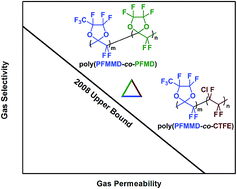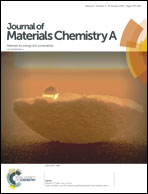High-performance perfluorodioxolane copolymer membranes for gas separation with tailored selectivity enhancement
Abstract
Separations using polymer membranes is a rapidly growing field due to membrane advantages such as energy efficiency, environmental friendliness, and compact size. Among the materials considered for membrane use are perfluoropolymers, which offer unprecedented stability for operation in challenging conditions such as those required in industrial gas separations. Despite this favorable attribute, the relative lack of material choices has hindered perfluoropolymer adoption as membranes. Here, we report gas transport properties in a new family of amorphous perfluorodioxolane copolymers that show permselectivities above the polymer upper bound for important gas pairs (e.g., He/CH4, H2/CH4, N2/CH4). For example, the most selective of these membranes has a He/CH4 selectivity more than 5 times higher than any previously reported for a perfluoropolymer. The new copolymer membranes exhibit tunable transport properties through variation in the amount of monomers that function as “selective enhancers”. Such monomers, which show a tendency to crystalize as homopolymers, improve chain packing in the copolymer, enhancing the membrane ability to sieve molecules by size. In this manner, these materials open a new route to achieving tailored performance with inherently stable membranes. Moreover, these copolymers are soluble in fluorinated solvents, and thus are solution processable making their scale-up and conversion to membrane devices straightforward using existing industry methods.

- This article is part of the themed collection: Industry R&D collection


 Please wait while we load your content...
Please wait while we load your content...